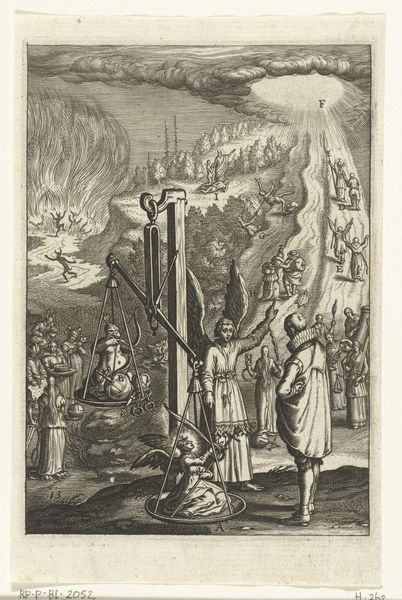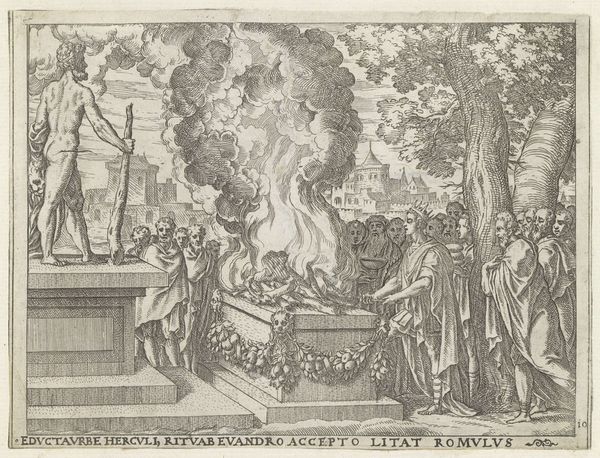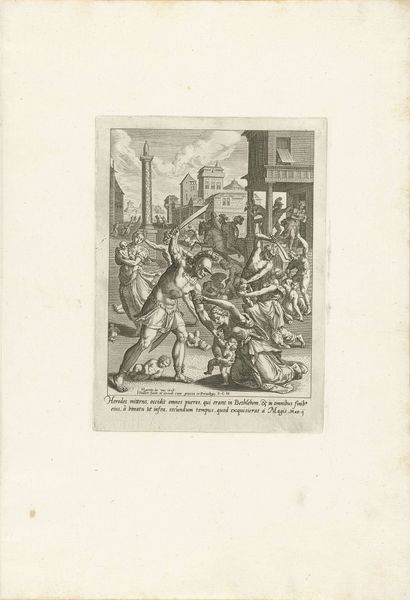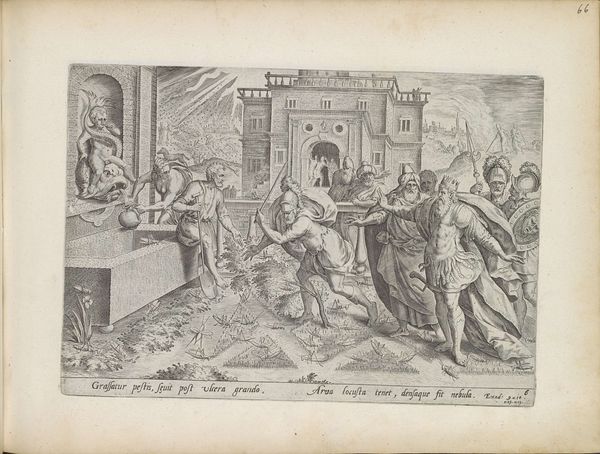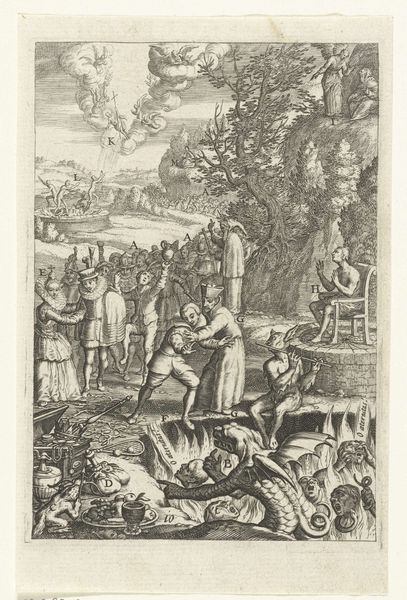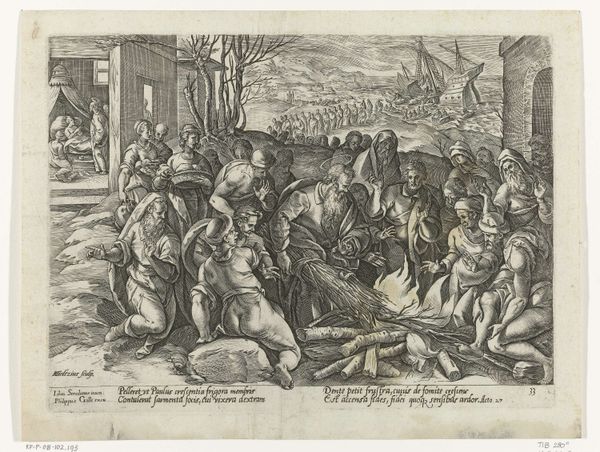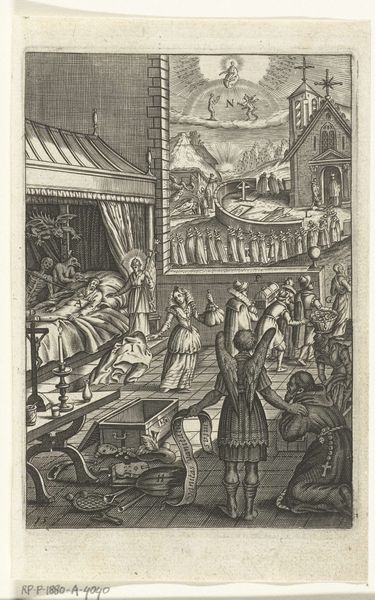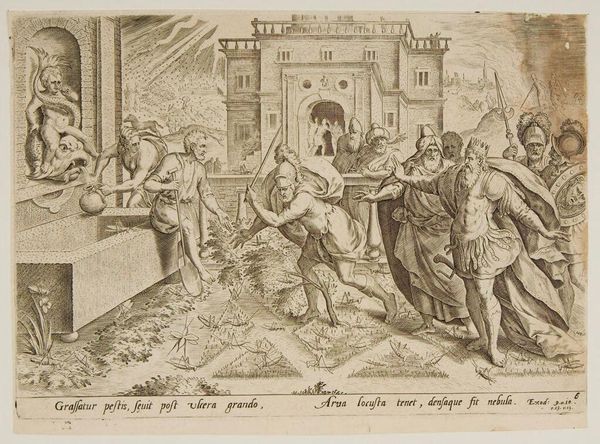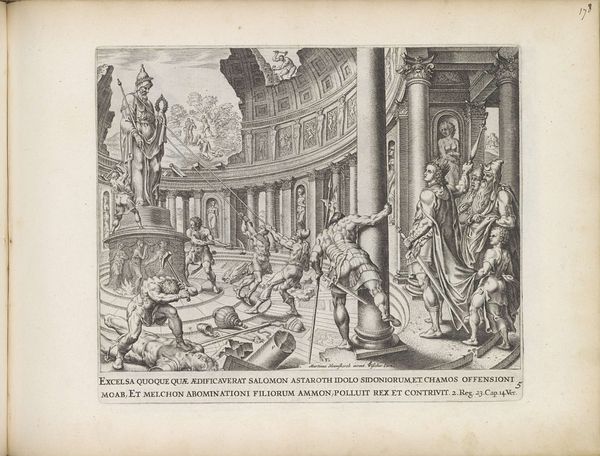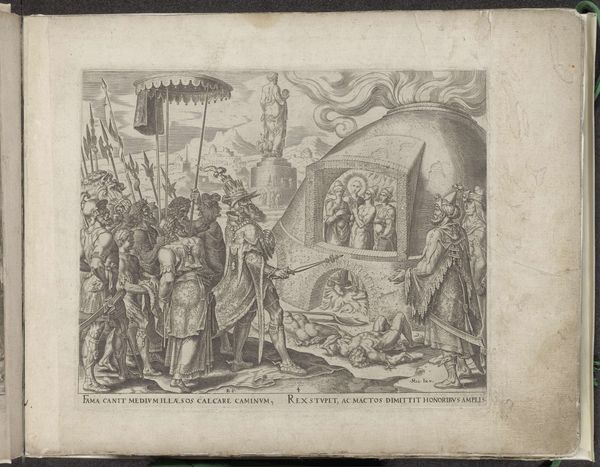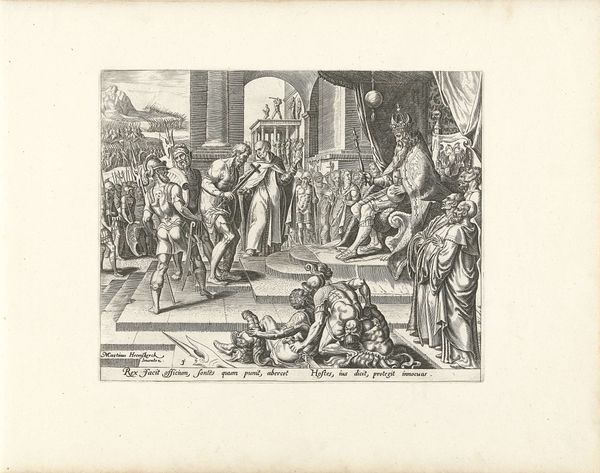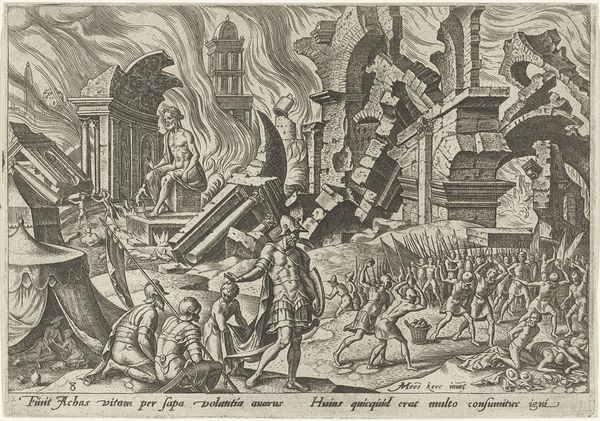
print, engraving
# print
#
pen sketch
#
old engraving style
#
figuration
#
history-painting
#
northern-renaissance
#
engraving
Dimensions: height 206 mm, width 253 mm
Copyright: Rijks Museum: Open Domain
Curator: This engraving from after 1567 by Philips Galle is titled "Elia knielt voor het brandende offer," which translates to "Elijah Kneeling Before the Burning Offering." It’s currently held at the Rijksmuseum. Editor: My first impression is of high drama rendered with incredible detail. The intense flames and the postures of the figures really draw me in. There’s almost a sense of frantic energy. Curator: Galle's depiction engages with complex theological and sociopolitical currents. Consider Elijah as a figure of resistance. He challenges the established religious and political authority, making his actions deeply subversive. The ritual scene before us unfolds against a backdrop of what feels like intense social conflict. Editor: Absolutely, the iconography here is powerful. Fire, of course, symbolizes purification and divine power, but also destruction. And Elijah’s kneeling posture—it speaks to humility and devotion but perhaps also acknowledges his precarious position. Do you think his gesture echoes similar poses from earlier, Classical art? Curator: Indeed, and the way Galle synthesizes both Northern Renaissance detail with Classical elements speaks to a broader cultural negotiation. We’re at a point where old systems are clashing with nascent humanist thought and emerging nation-states. The print participates in a larger discourse of reform and perhaps hints at some contemporary issues during its production in the late 16th century. Editor: The placement of the figures is key too. They are very intentionally arranged: some figures point directly upwards, to the fire; others downward, towards those fallen in subjugation. In looking at it this way, this artwork carries echoes of much older concepts relating to fate, consequence, or some form of 'payback' for sins of the recent past. Curator: Right. And look at the gazes of the figures in the background; a mix of awe, fear, judgment. Their expressions invite us to contemplate our own stance on faith, power, and resistance. Consider this work in dialogue with other artistic expressions of religious and social upheaval of the period, and broader shifts of faith in Early Modern Europe. Editor: This deep dive really highlights the painting’s rich visual language. Thanks to your background, it’s not simply a historical record. I now appreciate it as a symbolic battleground. Curator: Precisely, by examining the historical, social, and theological context of a visual artwork, we begin to realize its timeless quality—by understanding how power dynamics have manifested in various eras and how the oppressed resist systems of power and dominance, we gain not only clarity of how events in the past have happened, but learn important lessons in fighting similar contemporary conflicts in modern societies across the globe.
Comments
No comments
Be the first to comment and join the conversation on the ultimate creative platform.
